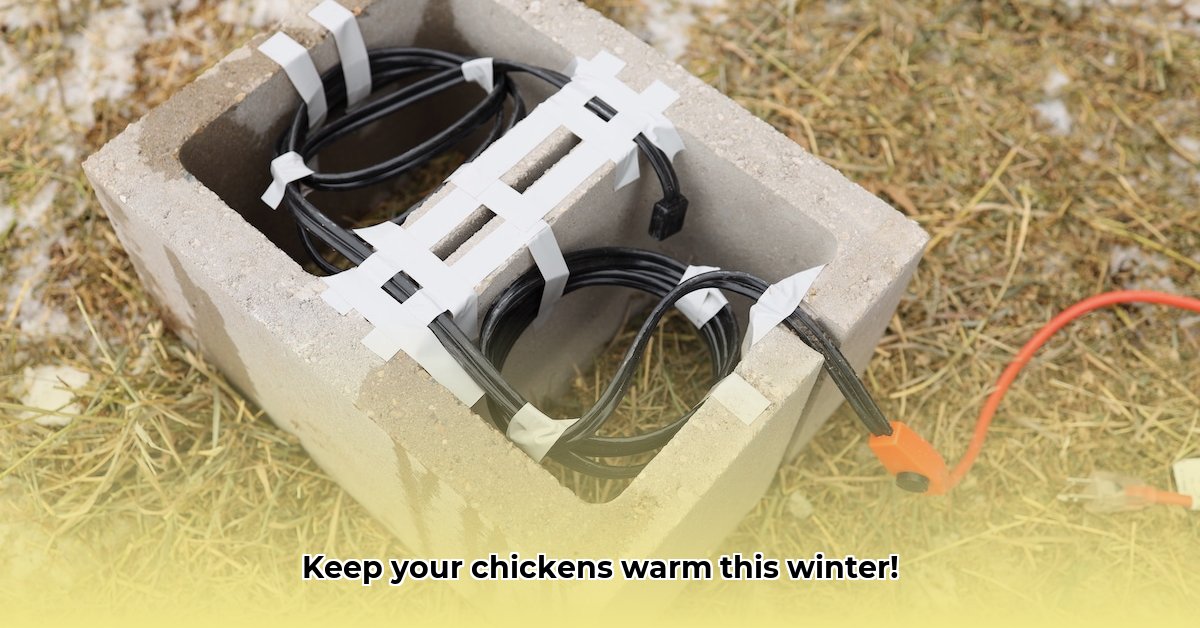
Keeping Your Chickens Happy and Hydrated All Winter
Winter's icy grip poses a significant threat to your flock's well-being. Frozen water deprives chickens of essential hydration, leading to decreased egg production, weakened immune systems, and even death in severe cases. A heated chicken waterer from Tractor Supply provides a simple yet effective solution to ensure your birds have access to fresh, liquid water, regardless of the plummeting temperatures. For more options, check out these portable heaters. This comprehensive guide will walk you through selecting, installing, and maintaining a heated waterer, ensuring your chickens remain healthy and productive all winter long.
Picking the Perfect Heated Waterer: Matching the Heater to Your Needs
Before heading to Tractor Supply, carefully assess your needs. Consider your flock size, the severity of your local winters, and your budget. Don't forget about the ease of cleaning—regular maintenance is crucial for both hygiene and the waterer's longevity. A small flock in a mild climate might suffice with a basic model, whereas a larger flock in a frigid region requires a more robust, perhaps even thermostatically controlled, waterer.
Key Considerations:
- Flock Size: Larger flocks necessitate larger-capacity waterers to prevent overcrowding and ensure sufficient hydration for all birds. How many chickens do you have? This directly influences the appropriate waterer size.
- Climate: The more severe your winters, the more powerful the heating element required to prevent freezing. Consider the average low temperatures in your region.
- Budget: Heated waterers vary significantly in price. Establishing a budget helps to narrow your choices and avoid overspending.
- Ease of Cleaning: Regular cleaning is paramount for hygiene. Select a design with readily accessible components for easy cleaning and maintenance. This helps maintain a sanitary environment and prolongs the lifespan of your waterer.
Key Features of a Great Chicken Waterer: What to Look For
When browsing Tractor Supply's selection, prioritize these features:
- Durable Construction: The waterer should withstand harsh weather conditions (rain, snow, ice), and the inevitable pecking of curious chickens. Look for robust materials like heavy-duty plastic or stainless steel. How long do you expect this waterer to last? A durable build is invaluable.
- Efficient Heating: An energy-efficient heating element minimizes electricity costs while ensuring reliable thawing. A thermostat offers precise temperature control, conserving energy and preventing overheating. How much will this waterer cost to operate over the winter? An efficient heater is key.
- Easy Cleaning: Regular cleaning prevents bacterial growth and disease. Choose a design with removable parts or easy-access features to simplify cleaning. How easy is it to clean this model? Consider this aspect closely.
- Safety Features: The heating element must be completely enclosed to eliminate the risk of electric shock to your chickens. Choose models with built-in safety features, and always ensure responsible electrical practices.
Setting Up Your New Chicken Waterer: A Step-by-Step Guide
Installing a heated waterer is generally straightforward. However, always consult the manufacturer's instructions for specific details regarding your chosen model.
- Location Selection: Place the waterer in a sheltered area of your coop, protected from drafts and direct weather exposure. This improves heating efficiency and maintains water temperature.
- Stable Placement: Ensure the waterer is securely mounted or positioned to prevent tipping or spills. A stable placement is crucial for consistent water access and reducing the risk of water wastage.
- Power Connection (if applicable): If your waterer uses electricity, connect it to a grounded outlet. Always protect the cord from damage and chewing by your chickens.
- Water Level Monitoring: Regularly check and refill the waterer to prevent it from running dry and damaging the heating element. It also makes sure the chickens have enough to drink.
- Regular Cleaning: Clean the waterer frequently (daily or as needed) to remove debris, droppings, and algae buildup. Regular cleaning is crucial for maintaining hygiene and preventing bacterial growth.
Weighing the Pros and Cons: Is a Heated Waterer Right for You?
Heated waterers offer many advantages, but it's important to weigh them against potential drawbacks before making your purchase.
| Advantages | Disadvantages |
|---|---|
| Prevents frozen water; ensures consistent hydration | Requires a consistent power source (for electric models) |
| Reduces stress and health problems in chickens | Initial purchase cost |
| Improves egg production | Potential risk of malfunction; requires maintenance |
| Simplifies winter poultry care | May introduce additional complexity to coop setup |
Troubleshooting Tips: What to Do When Things Go Wrong
Even the most reliable waterers can experience occasional issues. Here’s a structured approach to troubleshooting:
- Check Power Supply: Verify the waterer is correctly plugged in and the cord is undamaged.
- Inspect Heating Element: Examine the heating element for visible damage or malfunction.
- Deep Cleaning: Accumulated mineral deposits or dirt can hinder heating efficiency. Perform a thorough cleaning.
- Consult Manual: Manufacturer instructions often provide specific troubleshooting guidance.
Investing in a reliable heated waterer from Tractor Supply is a worthwhile investment in your flock's well-being. By following these guidelines, you can effectively ensure your chickens have access to fresh, unfrozen water all winter long, contributing to their overall health and productivity and reducing the overall impacts of cold weather on your flock. Remember that proactive maintenance is key to maximizing the lifespan and efficiency of your investment and minimizing any negative impacts on your poultry operation.